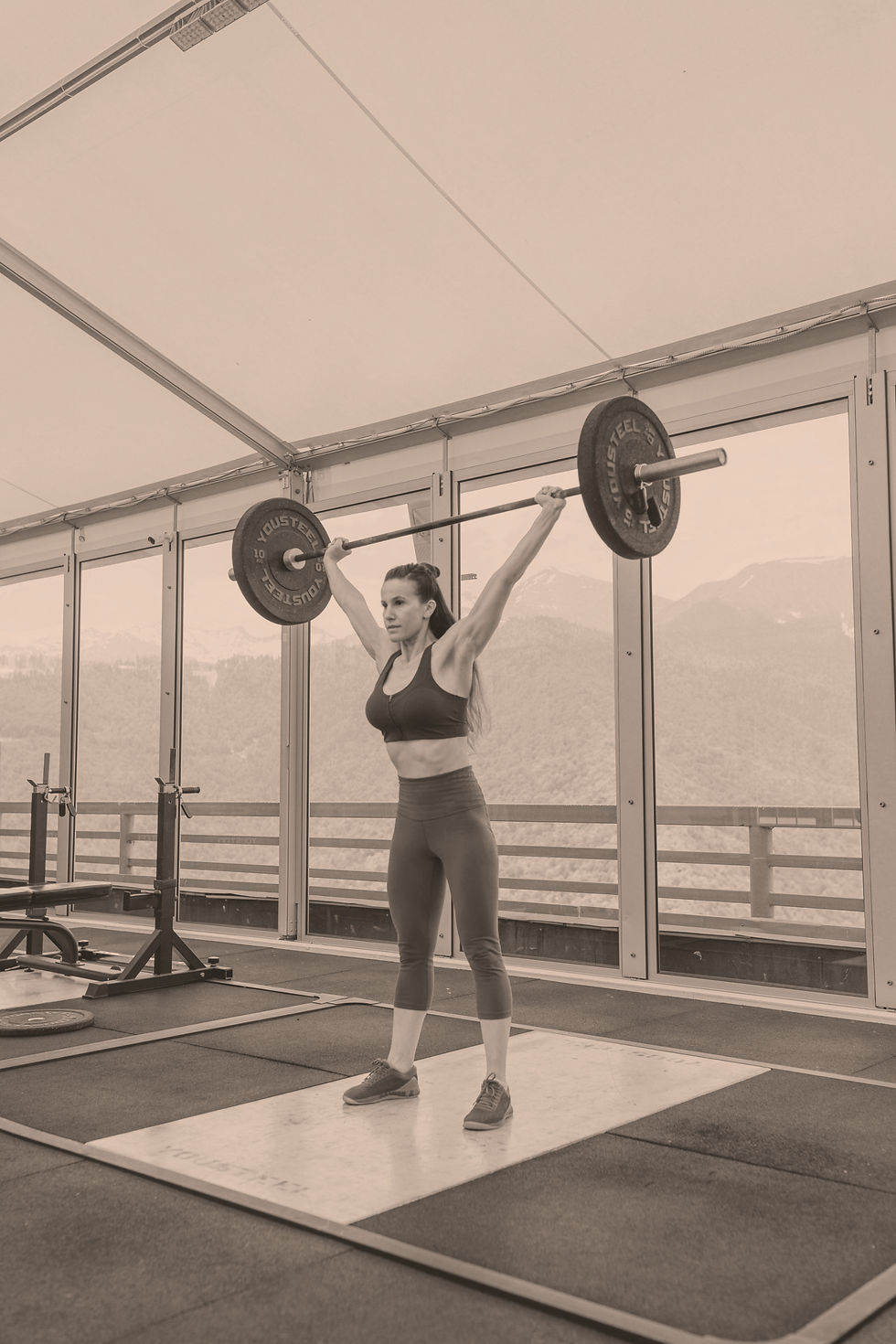My Top 6 Exercises to Include in (nearly) Every Training Program…and Why
- Coach Dave

- Jul 15, 2024
- 3 min read
Updated: Jul 23
For athletes over 30, incorporating exercises that enhance strength, flexibility, and overall conditioning is crucial. As our bodies age, focusing on movements that promote strength and prevent injury becomes increasingly important.
Here are my top six exercises every athlete over 30 should include in their training program, along with variations to keep things interesting and effective. How you fit these into your training depends on your specific goals, the phase of your program, your individual needs, and the facilities available.
1. Squats
Why: Squats are a fundamental movement that builds lower body strength, stability, and flexibility. They target major muscle groups like the quadriceps, hamstrings, and glutes, which are essential for athletic performance and daily activities.
Variations:
Bodyweight Squats: Ideal for beginners to master form.
Goblet Squats: Holding a weight in front of your chest adds resistance and improves posture.
Barbell Back Squats: For more advanced athletes to increase strength and muscle mass.
2. Push-Ups
Why: Push-ups are excellent for building upper body strength, specifically targeting the chest, shoulders, and triceps. They also engage the core, promoting overall stability.
Variations:
Standard Push-Ups: A great starting point for most athletes.
Incline Push-Ups: Easier on the shoulders and a good starting point for those building upper body strength.
Decline Push-Ups: Increase the difficulty by elevating your feet, adding more resistance to the upper chest and shoulders.
3. Planks
Why: Planks are a core stabilization exercise that strengthens the abdominal muscles, back, and shoulders. A strong core is crucial for injury prevention and overall athletic performance.
Variations:
Standard Plank: Start by holding a plank on your forearms and toes.
Side Plank: Focus on the obliques by holding a plank position on one side.
Plank with Leg Lift: Add a dynamic element by lifting one leg at a time, engaging the glutes and lower back.
4. Deadlifts
Why: Deadlifts are a compound exercise that targets multiple muscle groups, including the lower back, glutes, hamstrings, and core. They enhance overall strength and power, which is beneficial for various sports.
Variations:
Conventional Deadlift: Standard technique, lifting a barbell from the ground.
Romanian Deadlift: Focuses more on the hamstrings by keeping the legs straighter.
Single-Leg Deadlift: Improves balance and targets the glutes and hamstrings on one leg at a time.

5. Lunges
Why: Lunges improve lower body strength, balance, and flexibility. They also help correct muscle imbalances and improve coordination.
Variations:
Forward Lunges: Step forward into a lunge position, ideal for overall leg strength with focus on quads
Reverse Lunges: Step backward, which can be easier on the knees and better for balance with focus on glutes and hamstrings.
Walking Lunges: Adds a dynamic element, enhancing balance and coordination.
6. Calf Raises
Why: Calf raises strengthen the calf muscles (gastrocnemius and soleus), which are important for ankle stability and propulsion in running and jumping sports.
Variations:
Straight Leg Calf Raises: Stand with legs straight and lift heels off the ground.
Bent Leg Calf Raises: Perform calf raises with knees slightly bent to target different parts of the calf muscles.
Single Leg Calf Raises: Balance on one leg and lift the heel, focusing on unilateral strength and stability.
Conclusion
Incorporating these six exercises into your training program ensures a well-rounded approach to training, particularly for athletes over 30. Each exercise targets essential muscle groups and promotes functional strength, flexibility, and stability. Remember to start with variations that match your current fitness level and gradually progress as your strength and endurance improve. Consistency and proper form are key to reaping the maximum benefits and staying injury-free on your sporting journey.
If you are eager to explore how working with a strength and conditioning coach can help transform your performance contact Coach Dave at +61426205277 or dave@masterscoaching.com.au




Comments